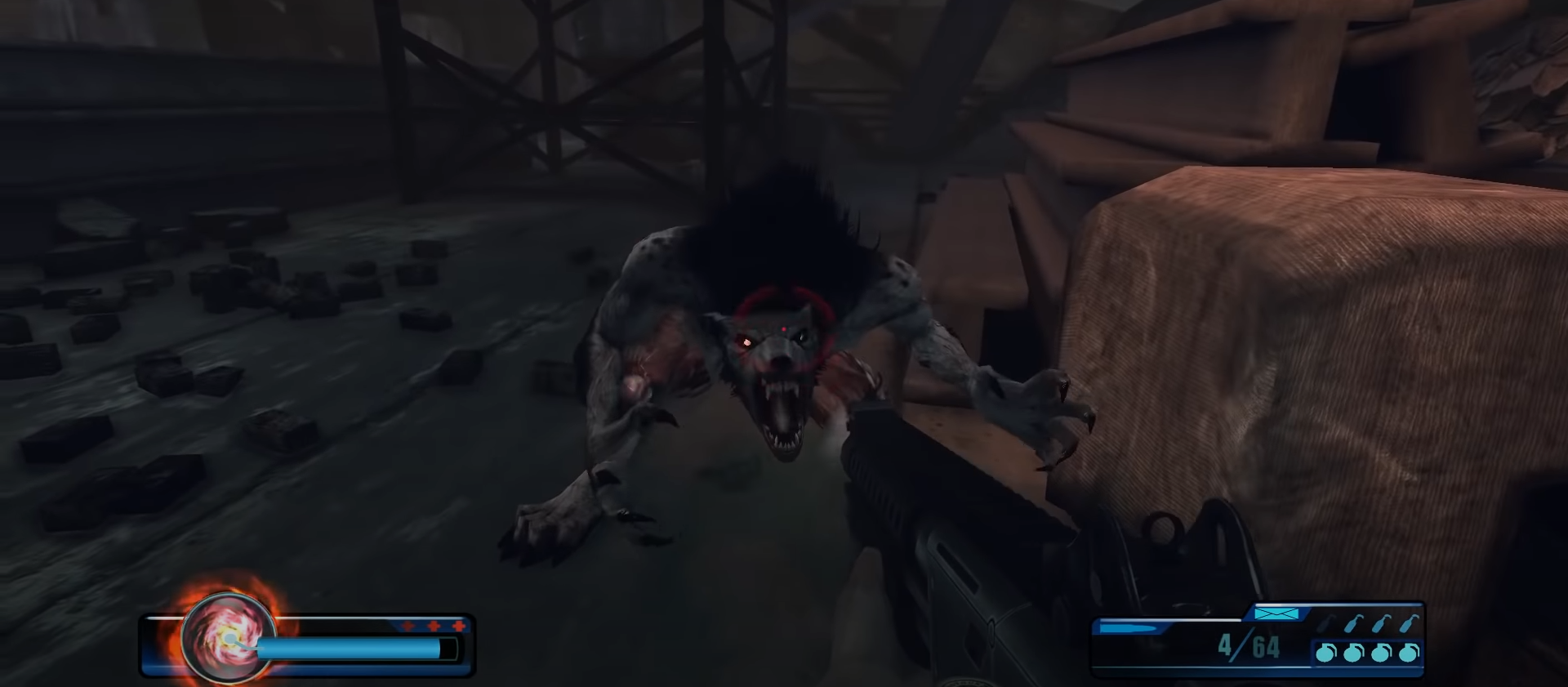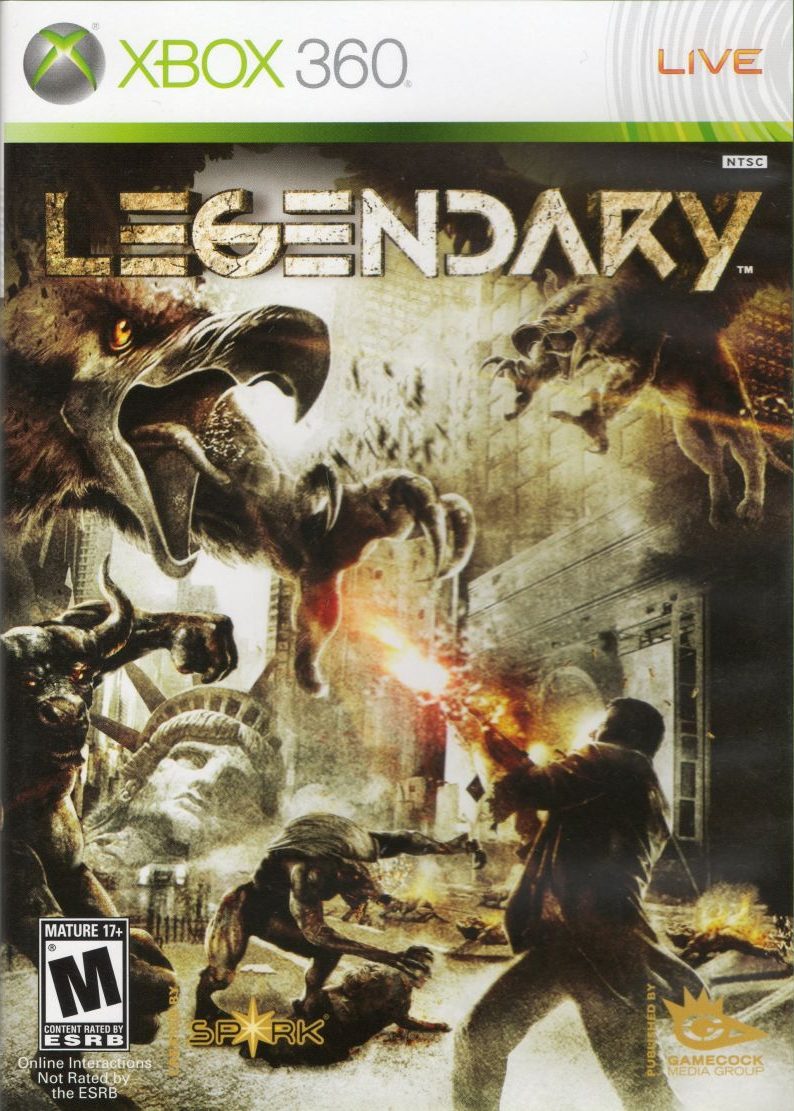

“Startin’ to think maybe it’s the end of the world, you know? Feel like I shoulda gone to church more often. I don’t know about you, but I just wanna go home… if it’s still there.”
What is a first-person shooter game that fumbles moving and aiming? That’s the question I found myself asking about twenty minutes into Spark Unlimited’s Legendary, a game that promised and failed to deliver a weekend’s worth of schlocky fun.
The premise is enticing enough. You play as an art-thief, Deckard, who’s been hired by a shadowy org called the Black Order to sneak into a museum and purloin the contents of an ancient repository. Unbeknownst to Deckard, the container in question is actually Pandora’s Box. And thus when he inserts the key, he opens the mythical ark that houses all manner of ancient evil and unleashes griffons, golems, krakens, minotaurs, firedrakes, pixies, and werewolves upon the earth. But all hope is not lost. Even though he’s been betrayed by his employer and left to fend for himself while that megalomaniac tries to take over the world, Deckard has been branded by the box and granted mysterious powers by his marking. And so it’s up to Deckard to foil the Black Order’s plans, round up the beasties that have overtaken the earth, and reseal Pandora’s Box once and for all.
From its trash pulp concepts, which range from mythical creatures to secret societies to military task forces to magical artifacts to supernatural abilities, it has the right ingredients for a fun romp of a story. Regrettably, the narrative is executed quite poorly and the potential for a diabolical witches’ brew is left untapped.
The game is strongest in its opening portion. After a prologue gives us a history of Pandora’s Box and walks through Deckard’s unwitting opening of it, we’re tossed onto the crumbling streets of New York City where griffons swoop down from the skies, attack pedestrians, and fling cars through the air. At the end of this segment, a skyscraper-sized golem is formed out of cars and chunks of debris and begins stomping around the city. There are pleasurable senses of scale and general mayhem achieved here that, if maintained, might have balanced out the game’s myriad shortcomings. Unfortunately, almost immediately after this opening level the game nosedives straight into the ground. Across the next seven levels—which mercifully take only a handful of hours to complete—you’ll find yourself crawling through vents and sewers, lurking in tight-cornered hallways and crowded science labs, forced to duke it out with infinitely-spawning werewolves in claustrophobic settings. Occasionally, there will be a vantage point or an arena that hint at the impressive scale of the opening level, but after a while it becomes clear that Spark Unlimited opened their album with the single and there are no deep cuts to be found; it’s all filler.
Gameplaywise, Legendary is your standard bottom-of-the-barrel FPS with a few interesting twists. You’re provided with the regular arsenal of FPS weapons—assault rifles, pistols, shotguns, rocket launchers, flamethrowers, grenades, molotovs, and a fire ax for melee. These stock weapons are complemented by the use of the aforementioned supernatural powers granted to Deckard by the Box’s brand, which allow him to absorb energy from dead enemies and use it to heal himself, stun enemies, and a few other seldom-used tricks. The other unique spin is, of course, the enemies. However, this element also feels half-baked. It is as if the developers only spent adequate time ironing out the mechanics of the werewolves, which doggedly pursue the player and, due to their infinite spawning in many sections, forces them to keep moving forward at a steady pace. You are even required to behead them lest they resurrect and begin their attack anew. But all of the other creatures, from the griffons to the kraken, feel benign when they should feel terrifying. And that’s when they are present at all. Oddly enough, after the werewolves, the most bountiful enemy type is Black Order Soldiers.
Legendary leaves a lot to be desired with its undercooked story and bare-bones gameplay elements, but it drops the ball entirely when it comes to the basic mechanics of the game. Invisible walls and sticky corners are pervasive, tripping up the player as they engage in close quarters combat with minotaur and griffons. The player can jump about six inches off the ground—which is insufficient for clearing just about all of the obstacles one encounters in the game—but can go from a standstill to a 20mph sprint faster than a cheetah. Combine these two actions and you’ll find yourself long jumping about forty feet, an unfortunately necessary maneuver when the game throws some rudimentary platforming into the mix. Dozens of doors require the player to stand by the keypad lock and hold a button for five seconds before they open—no keycard or hacking puzzle, just stand there and and hold a button. As annoying as this simple task may be, it’s made doubly annoying by the fact that you have to aim precisely at the keypad for it to detect your request to begin the hotwiring process.
But the most egregious error here is that the entire thrust of the game—fighting mythical creatures with guts and gunpowder—is tedious and disjointed. Almost all of the combat takes place in confined settings, and yet the only melee option is a fire ax that takes a few seconds to equip. It’s almost always unwise to switch to the ax but the controls and enemy AI are so unwieldy that most encounters devolve into a furry mass of haphazard gunfire. Movement is so erratic and touchy and the weapons provided to you so ill-suited for the situations that playing Legendary is simply not enjoyable.
Ultimately, although the game is woefully underwhelming, it is at least a harsh reminder that good games don’t just happen by accident. Rooting for the little guy with big ideas is easy when you think of all of the milquetoast big budget blockbuster shooters that get pumped out year over year, but without the right resources to see a big project through (and all but the simplest indie games are considerable undertakings) you end up with dysfunctional games like this one. If I had to guess—and the studio’s eventual dissolution bears this out—the failure here was not one of laziness or ineptitude, but some combination of a lack of development time and funding.
Sources:
Moser, Cassidee. “Developer Spark Unlimited Closes Down, Lays Off Staff”. IGN. 4 May 2015.